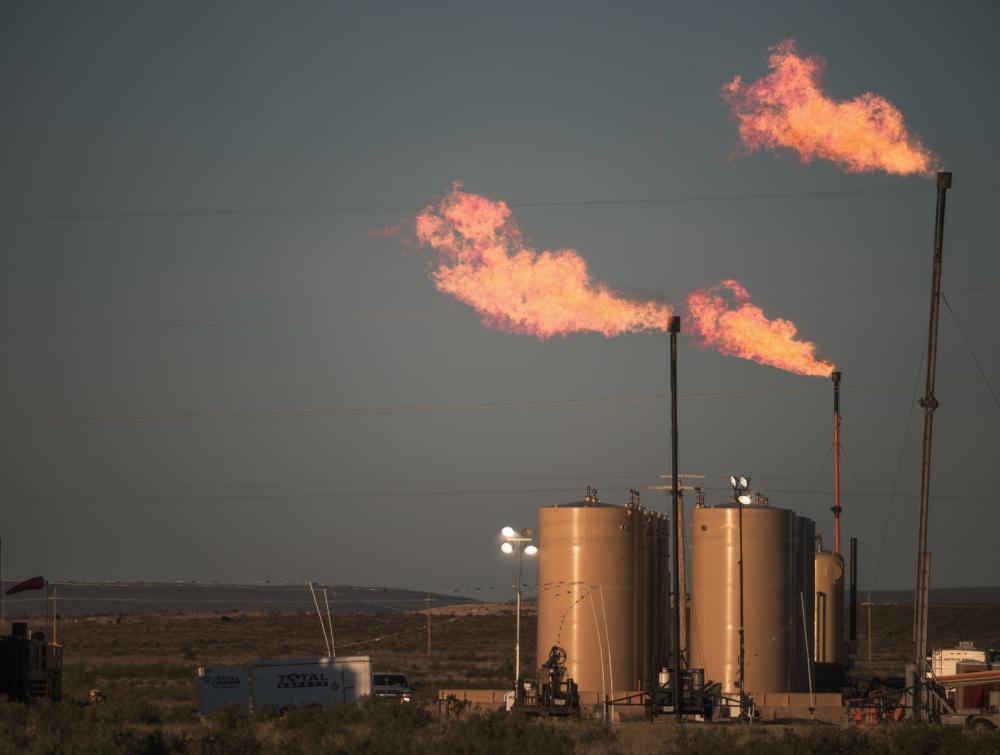Bernhardt has delivered on the oil and gas industry’s wish list

Methane flares in New Mexico
Mason Cummings, The Wilderness Society
Massive conflicts of interest surround new Interior secretary
On March 28, 2017, the Trump administration released an Executive Order that turned the Department of Interior into an arm of the fossil fuel industry, selling out public lands – national parks, culturally significant landscapes and wilderness habitats- to unnecessary and unwanted development. Now, two years later, the architect behind one of the largest assaults on conservation in U.S. history is poised to become the next Interior Secretary and continue with zero interest for public input and 100% focus on the industry he so faithfully serves.
A recent investigative story by Reveal, brought to light the oil and gas industry’s to-do list for overturning valuable environmental protections. Interior Secretary David Bernhardt has largely fulfilled this wish list:
WISH: Get rid of “burdensome” environmental protections and reduce public input
GRANTED: In March 2017, President Trump signed off on the rollback of the BLM Planning 2.0 rule, shutting Americans out of the process of deciding where and when to drill on public lands, and handing power over to the oil and gas industry. In October 2017, Bernhardt led the release of the “Energy Burdens Report,” which includes plans for wide swaths of regulatory and policy reversals to fundamentally change how public lands are managed, prioritizing energy development and ignoring the implications for climate change and the public.
WISH: Rewrite the sage-grouse conservation plans to weaken protections and open up millions of acres of protected habitat to destruction from oil and gas leasing
GRANTED: Shortly after his confirmation, then-Deputy Secretary Bernhardt was charged with overseeing the greater sage-grouse plans overall, an assignment that raised red flags as one of his former lobbying clients, the Independent Petroleum Association of America, was one of the industry groups pushing hardest to have sage-grouse protections rolled back. Notably, the IPAA signed onto a letter to Bernhardt, thanking him for his efforts to roll back the plans. In March 2019, Acting Interior Secretary Bernhardt announced the amended 2015 plans –opening 9 million acres of core sage-grouse habitat to oil and gas development.
WISH: Reverse or rewrite the 2016 BLM Waste Prevention Rule, which reduced natural gas waste on public lands, protecting the environment and the public
GRANTED: After a Congressional Review Act failed to pass Congress (which would have reversed the rule) and then the industry’s request for a Preliminary Injunction was not granted (which would have put the rule on hold), the Trump administration swooped in to suspend the 2016 rule. In February 2018, a federal court reversed the suspension, but then the administration took a third swing at policy, issuing a new rule in September 2018, which relies on the patchwork system of methane regulations across states, pleasing the fossil fuel industry. Bernhardt said, the revised rule reflected the administration's policy avoiding “regulatory burdens that unnecessarily encumber energy production, constrain growth and prevent job creation.”
WISH: Eliminate compensatory mitigation requirement for oil and gas developers on public lands (i.e. the practice of ensuring that where energy development impacts public lands and habitat, those impacts are offset through conservation investment)
GRANTED: Bernhardt signed Secretarial Order 3360 officially revoking Interior and BLM existing guidance on addressing climate change and applying mitigation. On July 24, 2018, BLM issued formal guidance taking it much farther and saying it’s no longer even legal for the BLM to enforce compensatory mitigation. Bernhardt noted the mitigation practice should “be voluntary.” The administration noted concern that the practice could “lead to abuse of the policy against industry.”
WISH: Get rid of the 2015 BLM Hydraulic Fracturing Rule, which required companies to disclose chemicals used in the hydraulic fracturing process and ensure wells are safe
GRANTED: Even though the Interior Department estimated that 90% of wells on public lands are developed using hydraulic fracturing, this rule was targeted in Bernhardt’s Energy Burdens Report, and by then-Interior Secretary Zinke’s Secretarial Order 3358 Establishing the Executive Committee for Expedited Permitting. Interior began a new rulemaking in early 2017 and issued a new rule in December 2017, in a very short timeframe. The new rule is being challenged.
Here is the actual story of polluter energy dominance on public lands under Bernhardt’s behind-the-scene influence:
- As of March 25, 2019, the Trump administration has offered 17,720,854 acres (an area larger than New Jersey and Maryland combined) to the oil and gas industry.
- Most of the lands offered for lease are in the top 25% of wildest places in the contiguous U.S. and top 25% most important areas for wildlife connectivity.
- Stripped protections for 153.3 million acres of land and water, an area larger than California and Washington combined.
- 620,356 acres sold at $2/acre - less than the price of a cup of coffee.
- 2 million public comments supporting protecting public lands ignored - about the population of Houston, Texas.
